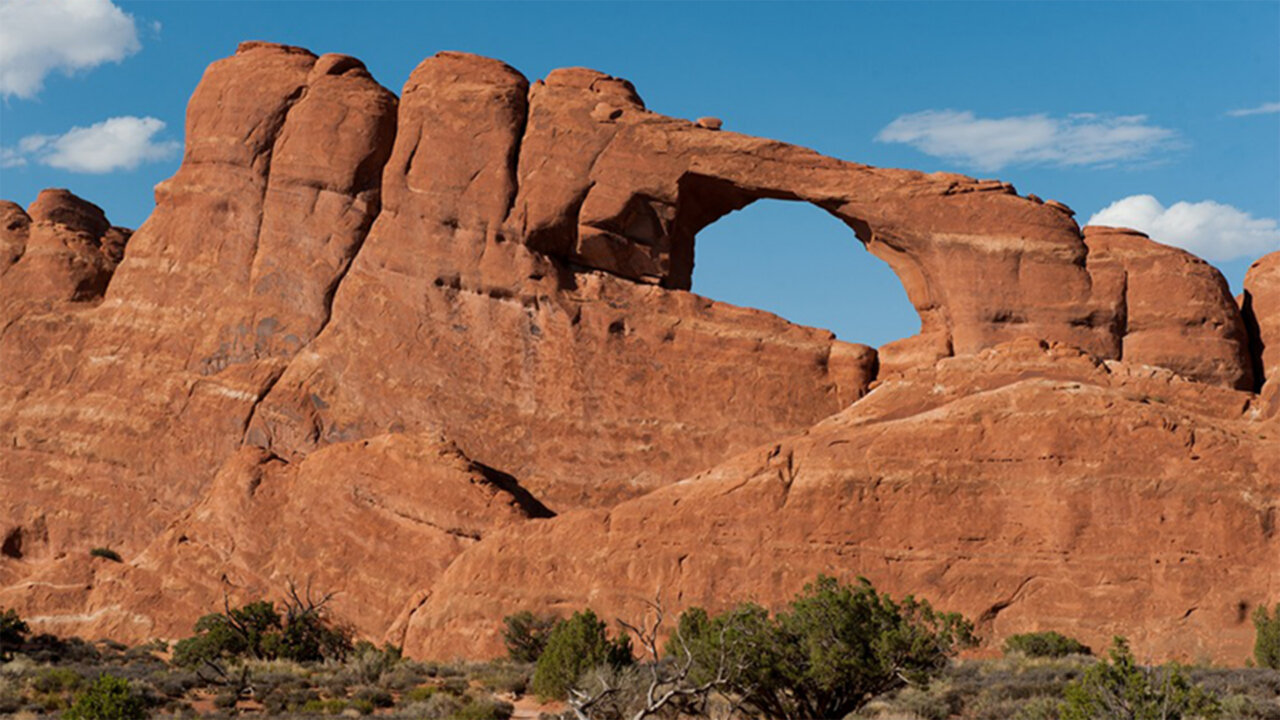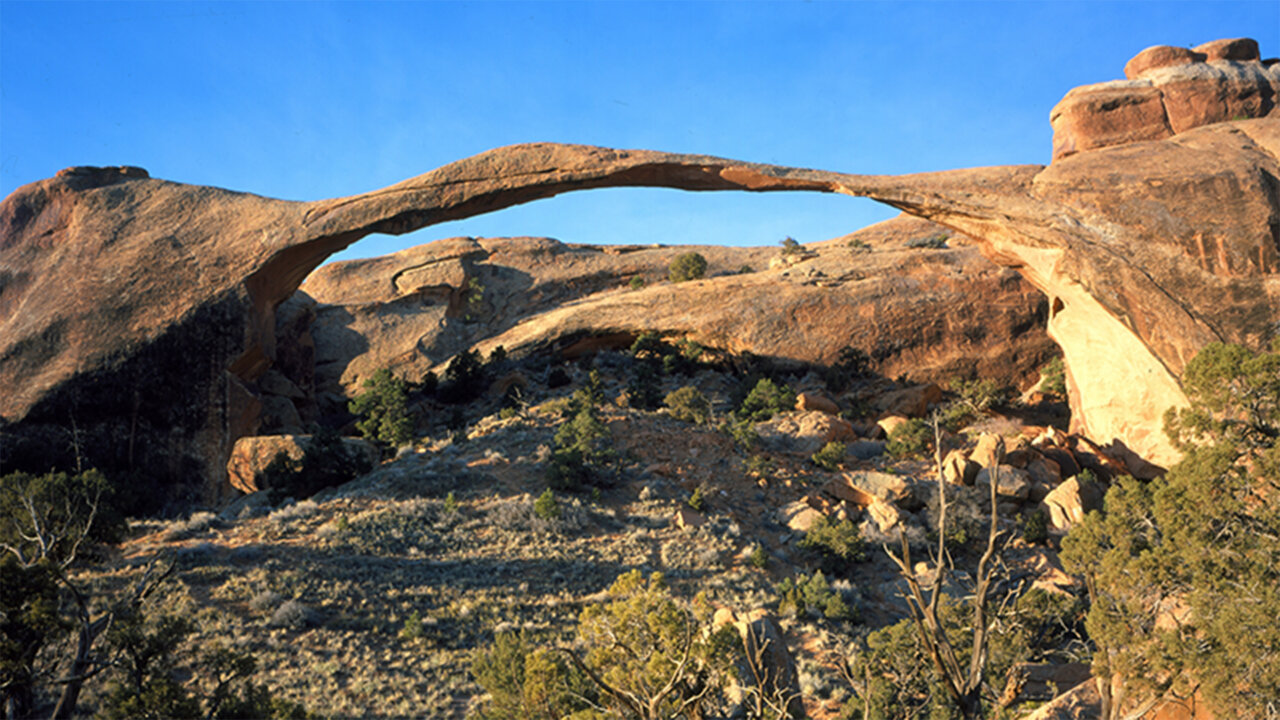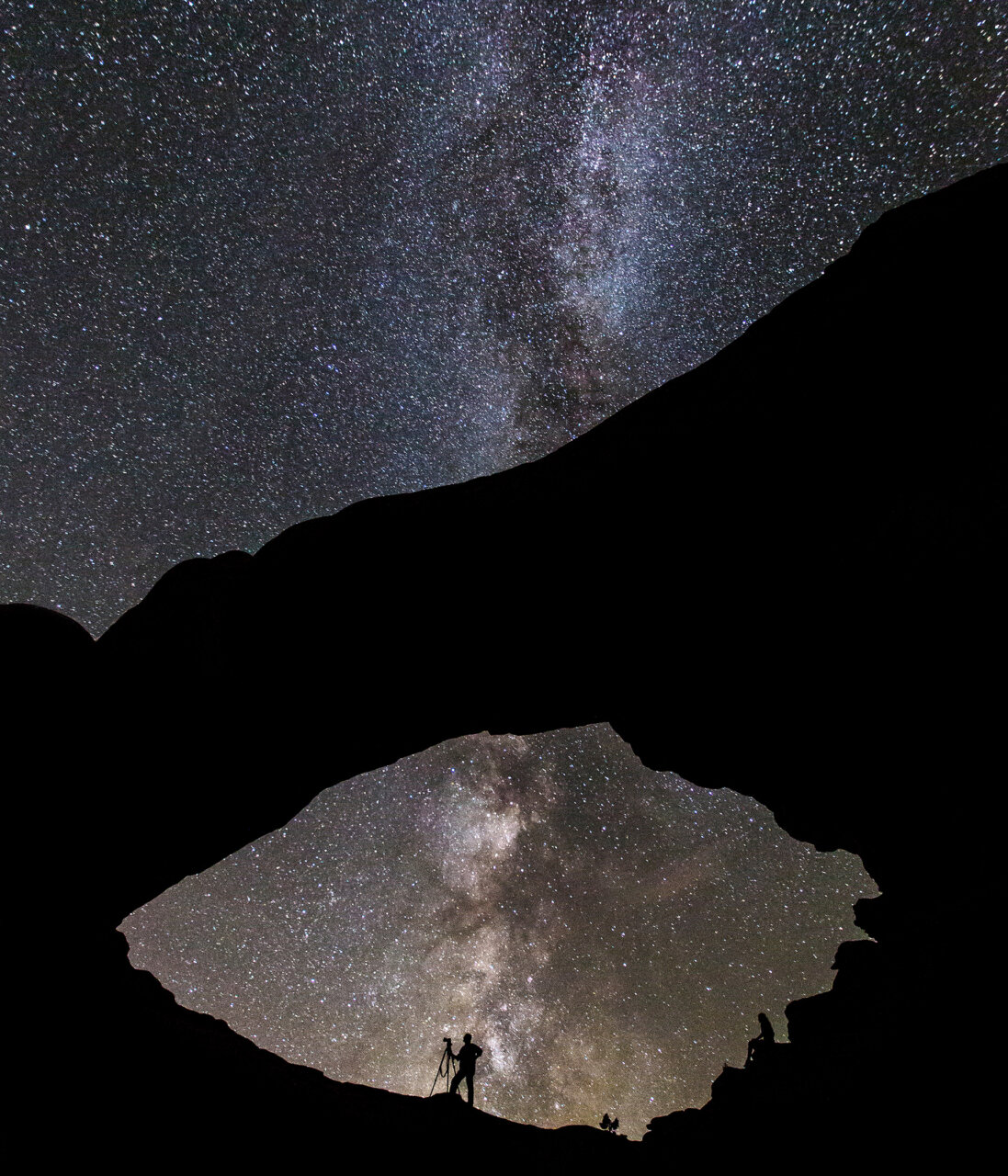
View of “Delicate Arch” in Arches National Park. Credit: NPS/Neal Herbert
Location: Grand County, Utah, U.S.
Size: 76,519 acres (44th largest National Park)
Established: November 12, 1971 (34th national park established in the U.S. [Note: This site was originally designated as “Arches National Monument” on April 12, 1929 and was later changed to a national park])
Overview:
Arches National Park is a red-rock wonderland and geological playground boasting thousands of natural stone arches, soaring pinnacles, massive fins, and balanced rocks scattered across a dramatic landscape. Here, vibrant, rocky vistas tell a story of deposition, erosion, and the passage of time in the high desert. Hot summers, cool winters, and limited rainfall have shaped both the land and its life.
Designated as Arches National Monument in 1929 and changed to National Park status in 1971, this striking corner of the Colorado Plateau preserves the densest concentration of natural arches in the world. What makes Arches truly special isn’t just its iconic formations. It is the way time, tectonic forces, and desert conditions have converged to sculpt a landscape that continues to change.
The Arches of Arches — Sculpted by Time:

Image of Skyline Arch in Arches National Park. Credit: NPS/Neal Herbert
The story behind the wonder and beauty that is Arches began over 65 million years ago — and continues today — with a unique geologic recipe combining salt, sandstone, water, and time.
Beneath Arches lies an ancient salt bed, laid down more than 300 million years ago. As layers of sandstone piled on top, the weight caused the salt to bulge upward, cracking the rock above. Over thousands of years, rain and snowmelt seeped into these fractures. Water widened the cracks, while freeze-thaw cycles slowly carved the sandstone into thin “fins.” In places where softer rock wore away, the fins developed openings that eventually became the graceful arches we see today.
What makes Arches extra-special is how perfectly this process came together here — and almost nowhere else — with a unique geology plus a dry desert climate to preserve the formations. To be considered an official stone arch at the Arches, there must be an opening of at least three feet in any direction. With over 2,000 arches documented, this national park is home to the densest concentration of natural stone arches in the world. Within its boundaries you can expect to see formations ranging from small slivers to expansive cutouts over 300 feet wide.
But these incredible formations are not frozen in time. This dynamic landscape will continue to be shaped as long as geologic forces carry on. As an arch erodes, gradually getting bigger, it may eventually be unable to support itself. Formations may break away, and arches may collapse of their own weight.
What will the park look like in 100,000 years as existing arches transform themselves, old arches collapse, and new ones begin to emerge?
Icons of Arches
Landscape Arch

Landscape Arch, located in the Devils Garden area of Arches National Park. Credit: NPS/Neal Herbert
Landscape Arch has an opening span of over 300 feet (the longest span in North America!)
Balanced Rock

Image of the iconic Balanced Rock, located inside Arches National Park. Credit: NPS/Chris Wonderly
This gravity-defying boulder known as “Balanced Rock” is made up of Entrada Sandstone perched atop an eroding pedestal of softer mudstone. This towering formation, soaring 128 feet tall, showcases nature’s artistry. Though it may appear precarious, the massive 3,600-ton rock remains anchored (for now) owing its unlikely position to millennia of erosion. Yet, as erosion continues, even Balanced Rock will one day fall — just as its “Chip-Off-the-Old-Block” sibling did during the winter of 1975-76.
Check out these “Then and Now” images from the NPS to see how this dynamic landscape has changed just in the last century.
Tumpituxwinap – Arches’ “storied rocks”

Wolfe Ranch Rock Art at Arches National Park portrays bighorn sheep and riders on horseback. Depictions of horses indicate these rock images were made after the arrival of Spanish explorers in North America. Credit: NPS/Neal Herbert
For thousands of years people have traveled through what we now call Arches National Park — not just as visitors, but as inhabitants and storytellers. Hunter-gatherers arrived at the end of the last Ice Age, around 10,000 years ago, drawn here by chert and chalcedony deposits perfect for crafting stone tools. While few dwellings remain, seasonal use left behind a rich imprint in the form of petroglyphs (rock engravings) and pictographs (rock painting) that continue to inspire wonder and a sense of connection across time.
One striking panel near Wolfe Ranch depicts desert bighorn sheep alongside figures on horseback. The latter implies more recent origins. The images likely were created by Ute artisans after horses were reintroduced to North America by Spanish explorers. These rock markings are more than art. They are messages carved into time, expressing practical wisdom, spiritual views, or social stories. The Paiute word Tumpituxwinap, or “storied rocks,” captures the images’ enduring significance as communication — a visual dialogue across generations.
Stargazing

A silhouetted photographer stands below a stone arch with the Milky Way overhead, Arches National Park, Utah. Credit: NPS/Jacob W. Frank
What do you see when you look up at the night sky? Unlike so much of the continental U.S., where city lights drown out the stars, a moonless night in Arches reveals a dazzling sweep of the Milky Way. The purity of its night sky earned Arches National Park the designation of an International Dark Sky Park in 2019. Even without special equipment, visitors can take in brilliant night skies, while guided programs help reveal deep space objects like Saturn’s rings through the help of equipment like binoculars and cameras.
The park carefully manages its nighttime environment to protect these views. Lights are limited to the entrance, visitor center, and campground, and are shielded and directed downward to reduce sky glow. The rest of the park remains unlit, preserving the wilderness character into the night.
To be named a Dark Sky Park means more than just great stargazing. It signals a commitment to protecting natural darkness. With 90% of the world’s population unable to see the stars because of light pollution, Arches offers a rare connection to the skies above that most people no longer experience.

A ranger sets a telescope at a stargazing event at Panorama Point. Credit: NPS/William Pedro
The NPS acknowledges, with respect, that Native people have been successful stewards of the land within the park since time immemorial. The NPS understands that the park is located within the ancestral and traditional homeland of the Hopi Tribe, Las Vegas Tribe of Paiute Indians of the Las Vegas Indian Colony, Moapa Band of Paiute Indians of the Moapa River Reservation, Navajo Nation, Rosebud Sioux Tribe of the Rosebud Sioux Reservation, Southern Ute Indian Tribe of the Southern Ute Reservation, Ute Indian Tribe of Uintah and Ouray Reservation, Ute Mountain Ute Tribe, White Mesa Ute, and Zuni Tribe of the Zuni Reservation.
Sources: All images and data are public domain provided via the Arches National Park NPS Site.
This piece comes to us from our nonprofit partner Post Pigeon EDU. With a mission to spark curiosity about the amazing nature in our public lands, Nature and Post Pigeon EDU are collaborating on a series of posts that will share the histories and stories of our National Parks.
More about Post Pigeon EDU: To ignite the next generation of planetary stewards, Post Pigeon EDU is a nonprofit organization working to increase exposure and access to the outdoors by bringing public lands and leadership into K-12 classrooms, virtually.
